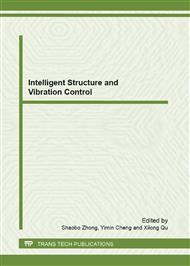p.115
p.120
p.125
p.130
p.135
p.140
p.145
p.150
p.155
Study of Parameters Optimization on Seismic Isolated Railway Bridges
Abstract:
Based on optimization theories, considering soil-structure interaction and running safety, the optimal design model of the seismic isolation system with lead-rubber bearings (LRB) for a simply supported railway beam bridge is established by using the first order optimization method in ANSYS, which the parameters of the isolation bearing are taken as design variables and the maximum moments at the bottom of bridge piers are taken as objective functions. The optimal calculations are carried out under the excitation of three practical earthquake waves respectively. The research results show that the ratio of the stiffness after yielding to the stiffness before yielding has important effect on the structural seismic responses. Through the optimal analysis of isolated bridge system, the optimal design parameters of isolation bearing can be determined properly, and the seismic forces can be reduced maximally as meeting with the limits of relative displacement between pier top and beam, which provides efficient paths and beneficial references for dynamic optimization design of seismic isolated bridges.
Info:
Periodical:
Pages:
135-139
Citation:
Online since:
February 2011
Authors:
Price:
Сopyright:
© 2011 Trans Tech Publications Ltd. All Rights Reserved
Share:
Citation:


